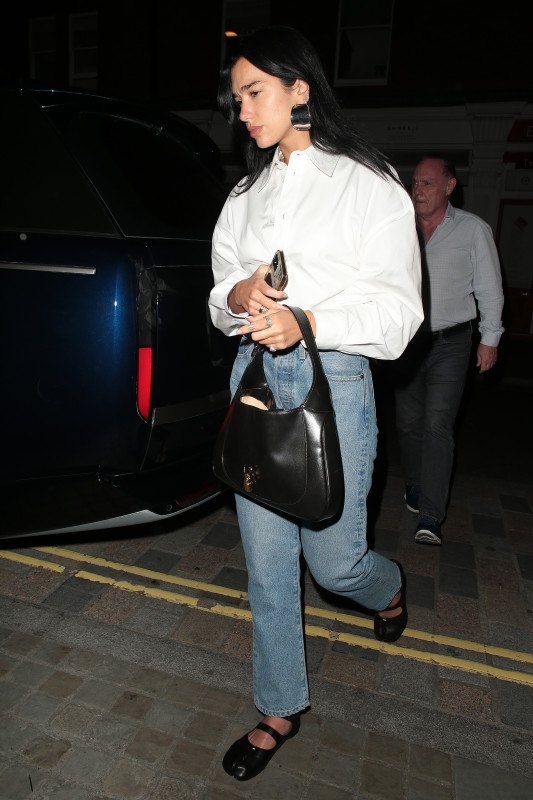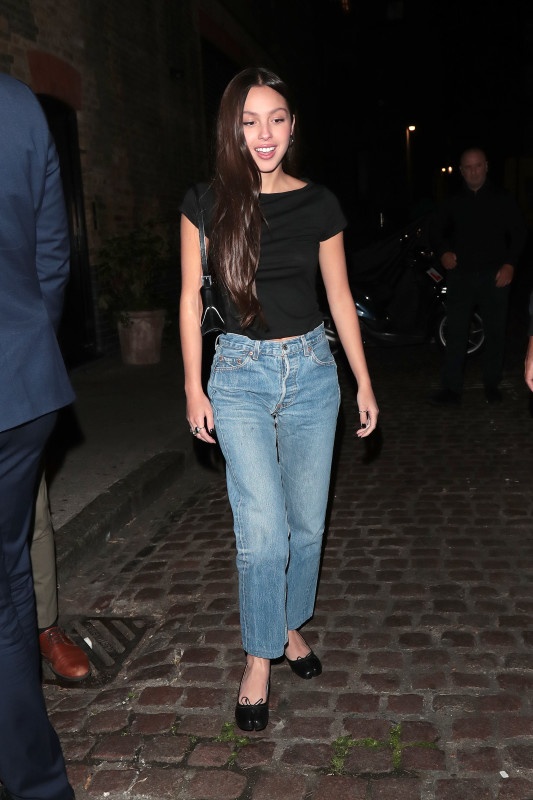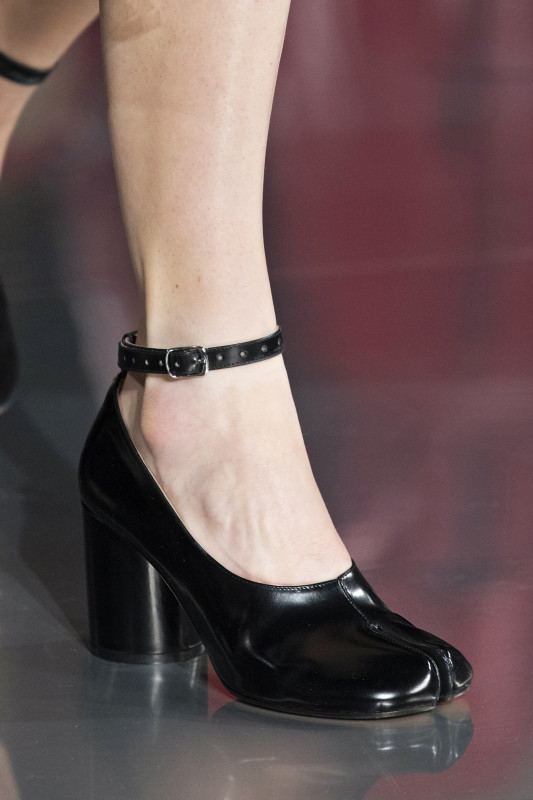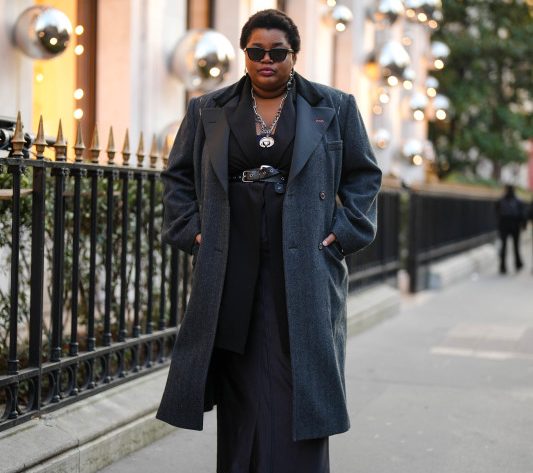Not Michael Patrick King nor Maison Margiela’s PR team could’ve come up with a story as perfect as that of the TikTok Tabi Thief. It’s a tale that not only encompasses the state of dating today, but also one that taps into the culture in the most specific of ways.
By now, there’s no point in rehashing the details, other than to say that after a viral whirlwind, Lexus — who took to social media to report the crime of her Maison Margiela Tabi Mary Janes being stolen by her Tinder date — eventually got her cloven-toe shoes back. She was also gifted a new pair by Ssense, invited to a slew of New York Fashion Week shows and expertly leveraged the attention as publicity for her knitwear label, Maddi and Danii.
View the original article to see embedded media.
Of course, the other brand garnering free publicity out of the whole debacle is Maison Margiela. The brand’s Tabi style, with its very specific look, has been a longtime fashion-crowd favorite, but it was introduced to a whole new audience through this saga. (The original TikTok has over 1.4 million views, and Lexus’ subsequent updates almost meet that number.) After being picked up everywhere from Vogue to the New York Times, Launchmetrics estimates that, from Sept. 9 through Sept. 11, the story garnered over $983K in Media Impact Value. Trendalytics, meanwhile, reports that “search volumes for Tabi boots increased 133% compared to this time last year,” while Lyst saw searches for Tabis spike 150% that week.
“Typically, a viral fashion moment within the culture causes a demand uptick for the brand or item — take Beyoncé singing about Telfar in ‘Summer Renaissance,'” says Noelle Sciacca, senior fashion lead at TheRealReal, which has seen searches for the Margiela shoes almost triple — up over 170% month over month — since the incident. “Tabis have been no exception.”
Since their introduction on the Maison Margiela runway at the brand’s debut show in 1988, Tabis have been considered the fashion-insider shoe: rebellious and anti-fashion, reserved for those who were drawn to the provocative difference in design. Recognized by Martin Margiela himself as “the most important footprint of (his) career,” the toe motif was inspired by Japanese tabi socks, which date back to the 15th century and are divided into two toe sections to promote balance, based on holistic reflexology. Initially a status symbol reserved to the elite, as rubber soles were added and cotton routes opened to China, the Jika-Tabi became the standard footwear of blue-collar workers.
Photo: Edward Berthelot/Getty Images
The mainstream-ification of the Margiela Tabis began in earnest on TikTok a few years ago, as fashion obsessives began using the app as a way to democratize the industry, posting educational videos spanning everything from the history of heritage houses to current runway trends. Soon after, Nick Jonas wore the Reebok Tabi collaboration to an awards show, and none other than “Emily in Paris” herself was spotted in a tan version of the iconic ankle boot. Now that we have “balletcore” reviving the Tabi ballet flat (worn this year by Zendaya, Dua Lipa and Olivia Rodrigo), alongside an ongoing ‘ugly shoe’ trend, and mustachioed men stealing Margiela’s reinterpretation of the Japanese shoe from New York City apartments, it begs the question: Are Tabis going… mainstream?
Longtime Margiela fans don’t seem to be concerned about the shoe’s surge in popularity — at least, not yet.
“Fashion is cyclical. Even if Tabis hit the trendiness tipping point, they’ll have a resurgence later,” says Chelsea Fairless, co-host of fashion podcast “Every Outfit” and owner of three pairs of the Margiela shoe. “Consider the Murakami Louis Vuitton bags: We collectively got so sick of them, they disappeared for 15 years and now everyone’s carrying them again. While Tabis are odd-looking, they’re an icon of minimalist fashion, and those sorts of pieces tend to endure in a way that their maximalist counterparts don’t.”
As for what Fairless would do if hers were to disappear from her closet after a date? “I would feel the despair of Carrie Bradshaw being robbed of her Manolos at gunpoint,” she says. “Then, I would have an overly dramatic breakdown. And then, like the Tabi thief victim (or survivor?), I would probably take my grievances to the internet.”

Photo: Ricky Vigil M /Justin E Palmer/GC Images

Photo: Ricky Vigil M. and Justin E. Palmer/Getty Images
It’s hardly a new phenomenon for fashion houses to use accessories as a way to connect with the mass market, which then allows them the freedom to create however they want in other categories (and satisfy their niche audience). Alessandro Michele did it at Gucci, with the re-release of the classic horsebit loafers and gold logo belts, which boosted the brand’s popularity and visibility for years. Rick Owens has, too, with its DRKSHDW Ramones sneakers, which are frequently unboxed and discussed on TikTok.
“The Ramones gaining such widespread popularity in this decade has only seemed to help the brand even further,” says Rukiat Ashawe from Creative Agency and The Digital Fairy. “This could end up being the case for Maison Margiela, too, as the Tabi’s were also a classic staple long before they gained attention on TikTok.”
Pulling up her history, professional sourcer Gab Waller reveals she didn’t receive a single request for Tabis in 2019, 2020 or 2021 — but they began trickling in slowly in 2022 when people couldn’t get their hands on the Margiela x Reebok collaboration. This year, she’s seen a significant jump, especially in the silver metallic style (i.e. the broken mirror ballerina) that seems to be sold out everywhere. Her latest request came in just five hours before we spoke. Still, Waller doesn’t believe Tabis are at risk of becoming oversaturated, either.
“Although they’re trending right now, the style really isn’t for everybody — I know from speaking specifically to my clientele that many just wouldn’t wear them,” she says. “They don’t appeal to every consumer in the way other styles that have really popped off do.”

Photo: Launchmetrics Spotlight
Fashion critic and archivist Kim Russell agrees, arguing that, to the majority of the population, the Tabi will never not be polarizing.
“It’s the hoof shoe on Facebook. People who are really against them absolutely despise them,” she says.
She’s right: Over on Twitter, much of the discourse around Tabis isn’t about where to buy them, but rather why anyone would buy them in the first place. This is precisely why they’ve amassed this cult following: What attracts enthusiasts to the shoe is the fact that it’s not for everyone, nor was it meant to be. In an algorithmic world saturated by sameness, the allure of the Tabi is that its outward ugliness has warded off the masses, at least thus far. But, as Waller warns, sometimes it only takes one celebrity (or, perhaps, one viral story) to change that.
“Speaking specifically about my business, I’ve seen it only takes one extremely influential person to post an item. Then I know it’s game over,” she says. “If someone like Hailey Bieber or Sofia Richie Grainge wore Tabis, I would definitely reassess.”
Bieber wearing Tabis isn’t something I’d even considered as a possibility, and the thought briefly made me frown at my own pair, sitting in my closet. But to truly transcend the trend cycle, it can’t be about who wears items, but about how they’re worn, styled to suit one’s individual taste. In other words: If Comme des Garçons can work with H&M and not lose its influence, the Tabi can surely survive TikTok.
“Individuality is what sets us all apart. There are no two people alike, so our approach is always slightly different,” Russell says. “People are just really dramatic with the way they look at trends. The life of a garment doesn’t end with famous TikTokers.”
Want the latest fashion industry news first? Sign up for our daily newsletter.



